Invasive plants: 12 plants to avoid growing in your yard
Invasive plants grow and spread rapidly and will cause damage to natural habitats, so make sure you know about the worst offenders

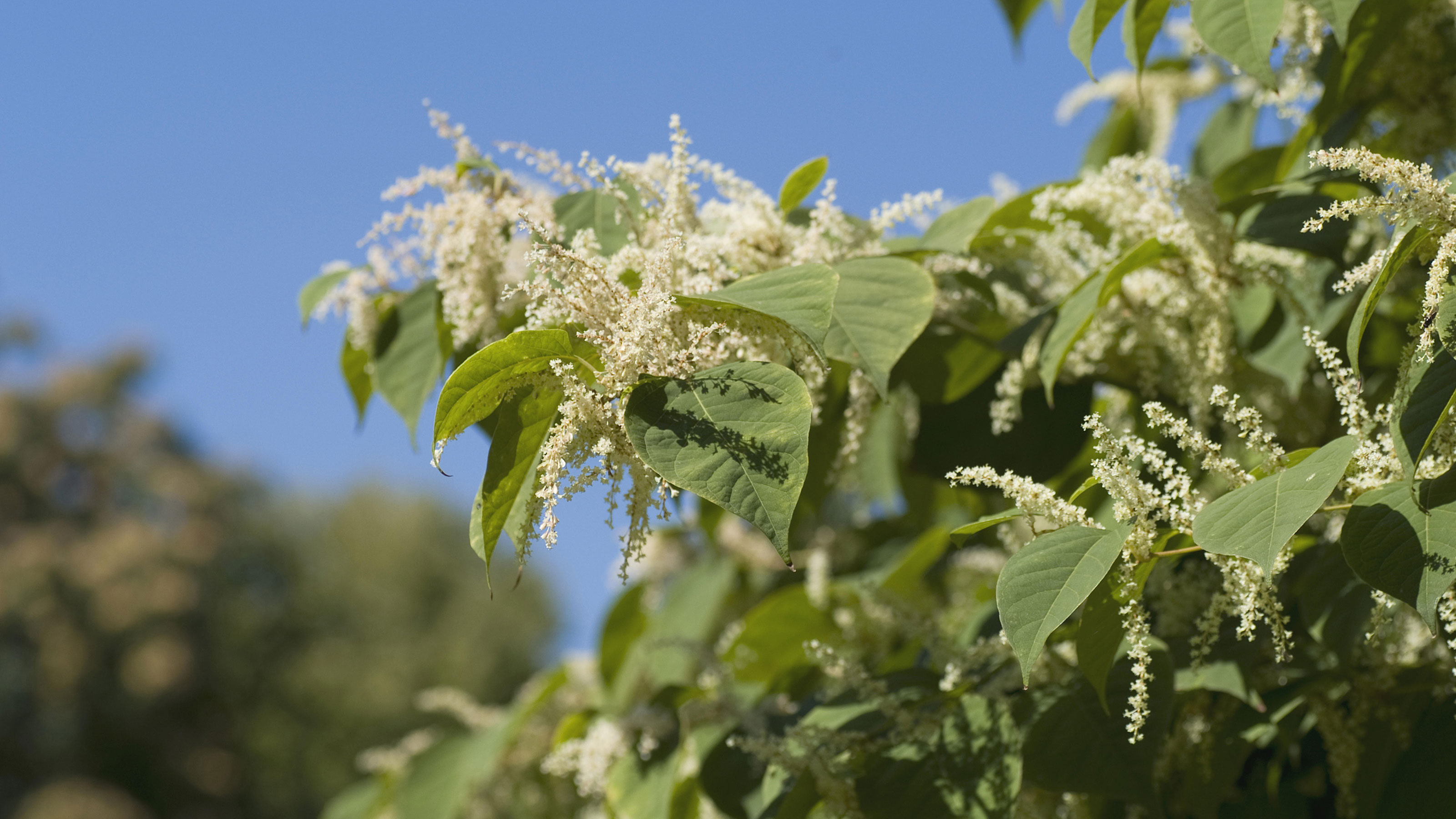
Invasive plants are those that have been introduced by humans and which then go on to damage natural habitats. They grow and spread rapidly, smother native plants and flowers, often overwhelm native animal and insect life and may transform a landscape dramatically.
Invasives can be trees, shrubs, vines, perennials, annuals or aquatics and are often first planted because they are useful or attractive plants for our yards. Some native plants can also spread rapidly, but these are not usually classified as invasive.
Many invasive plants were deliberately introduced to natural habitats, for various reasons, then spread unexpectedly. Some escaped from gardens and yards, some were accidentally introduced.
It is important to remember that many plants are invasive in some parts of the country, but perfectly well-behaved in others. So each state has its own list of invasive species, your local Cooperative Extension Service or local nurseries can provide detailed information.
Controlling invasive plants is often difficult. As with how to get rid of weeds, hand pulling or digging is a widespread approach, and in some areas insects or fungi that feed on a particular invasive have been introduced. Weed killers are also sometimes used but come with their own risks. Deer can make the problem worse by eating native plants but not invasives.
For most of us the crucial thing is to make sure invasive plants aren't included in our yards and, if we see any invasives arrive, to pull them out straight away.
12 invasive plants to be aware of
Our list of 12 of the most common invasive plants for you to avoid will help to prevent these invasive species from becoming even more problematic in your area.
1. Japanese barberry (Berberis thunbergii)
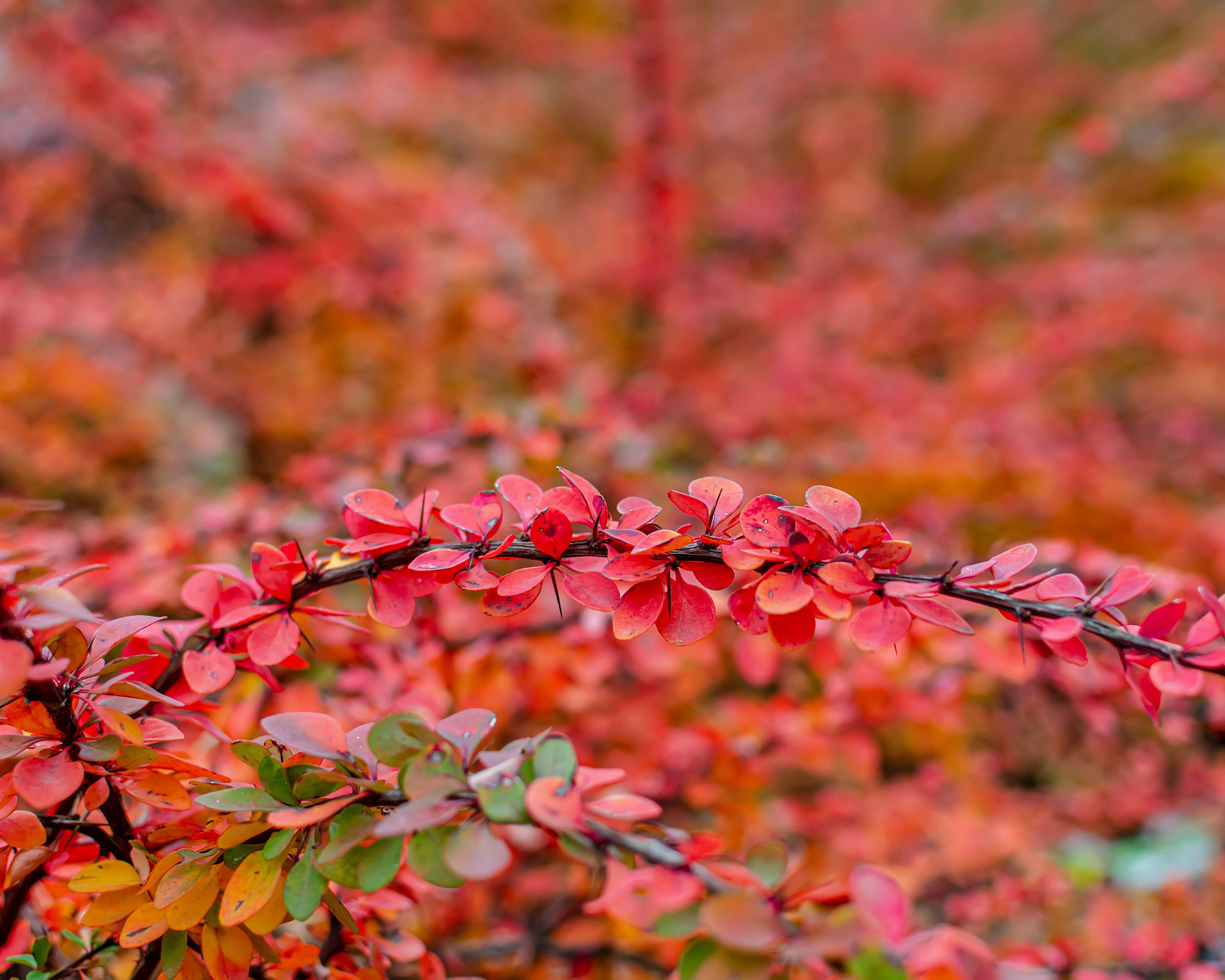
- Hardiness: USDA 4-8
- Spreads by: Seeds
- Control Japanese barberry by: Digging out, or cutting back hard and treating with weed killer in spring, or spraying the plant with weed killer in summer
- Native alternative: Ninebark (Physocarpus opulifolius)
This thorny shade-tolerant deciduous shrub, with small rounded leaves, clusters of small yellow spring flowers and red berries, colonizes the floor of deciduous forest in the north and east. At first, it often spreads from our backyards, as ornamental varieties with purple or variegated leaves are planted in gardens. Many also feature attractive fall color.
Once plants have established themselves their spread is encouraged by the fact that they are not eaten by deer.
Varieties that do not produce seeds, and therefore spread less easily, are now being introduced but it is not yet clear if they are always 100% seed free.
2. Butterfly bush (Buddleja davidii)
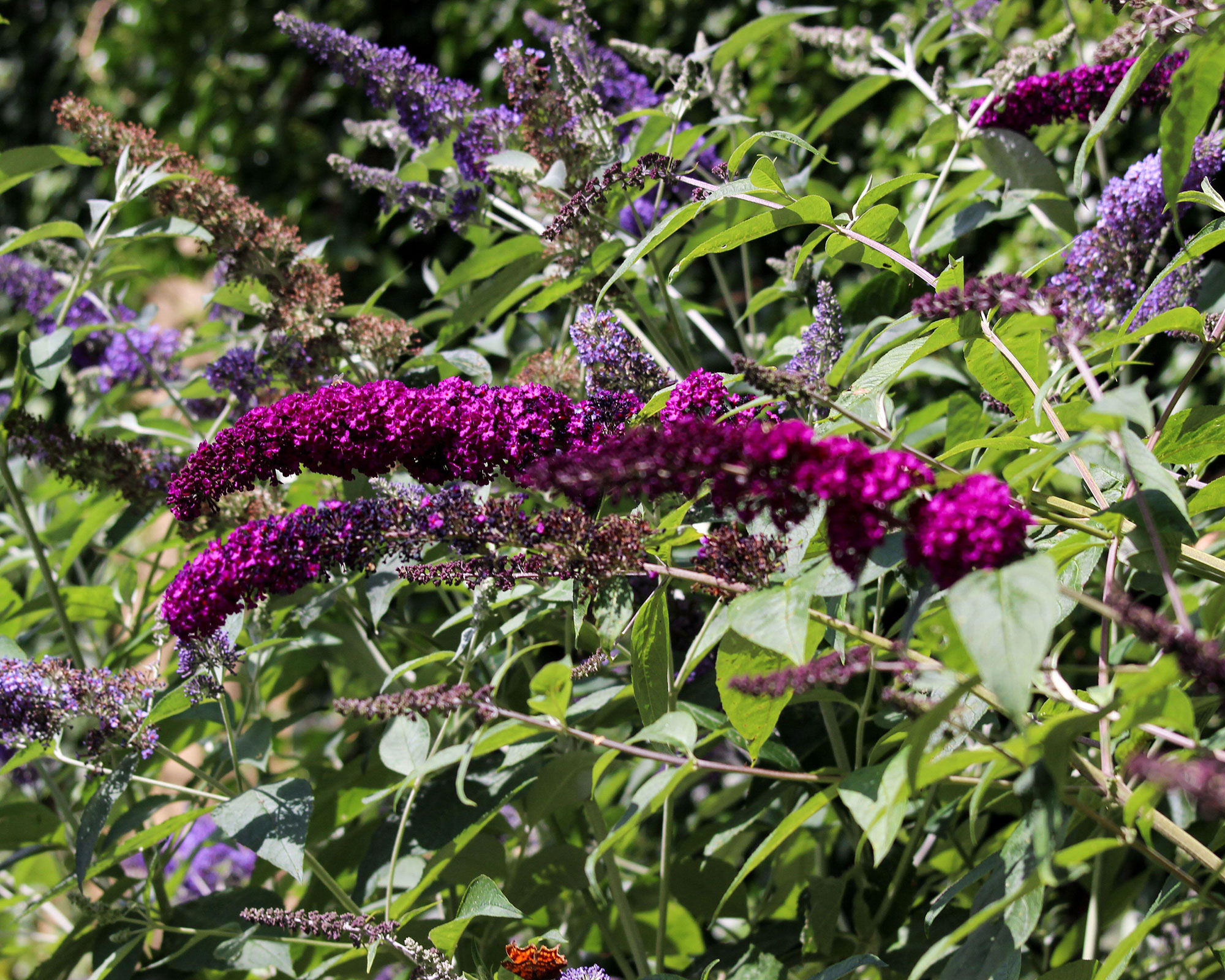
- Hardiness: USDA 5-10
- Butterfly bush spreads by: Seeds
- Control butterfly bush by: Digging out, or cutting back hard and treating with weed killer in spring, or spraying the plant with weed killer in summer
- Native alternative: Bottlebrush buckeye (Aesculus parviflorum)
A vigorous, sun-loving deciduous shrub that features pointed greyish leaves and long spikes crowded with tiny, sweetly fragrant, nectar-rich summer flowers. Garden varieties come in a wide range of rich and pastel colors, but as they establish themselves outside gardens they tend to revert to pale mauve.
Widely seen in the east and west of the US, plants are killed to ground – or killed completely - in zone 5 where they may not seed at all.
Often planted for its popularity with butterflies and hummingbirds, once escaped it smothers native vegetation in sunny, well-drained sites including fields, roadsides, abandoned railroads and mines, on dry slopes and often damages garden walls by rooting in the cracks.
3. Chinese wisteria (Wisteria sinensis)
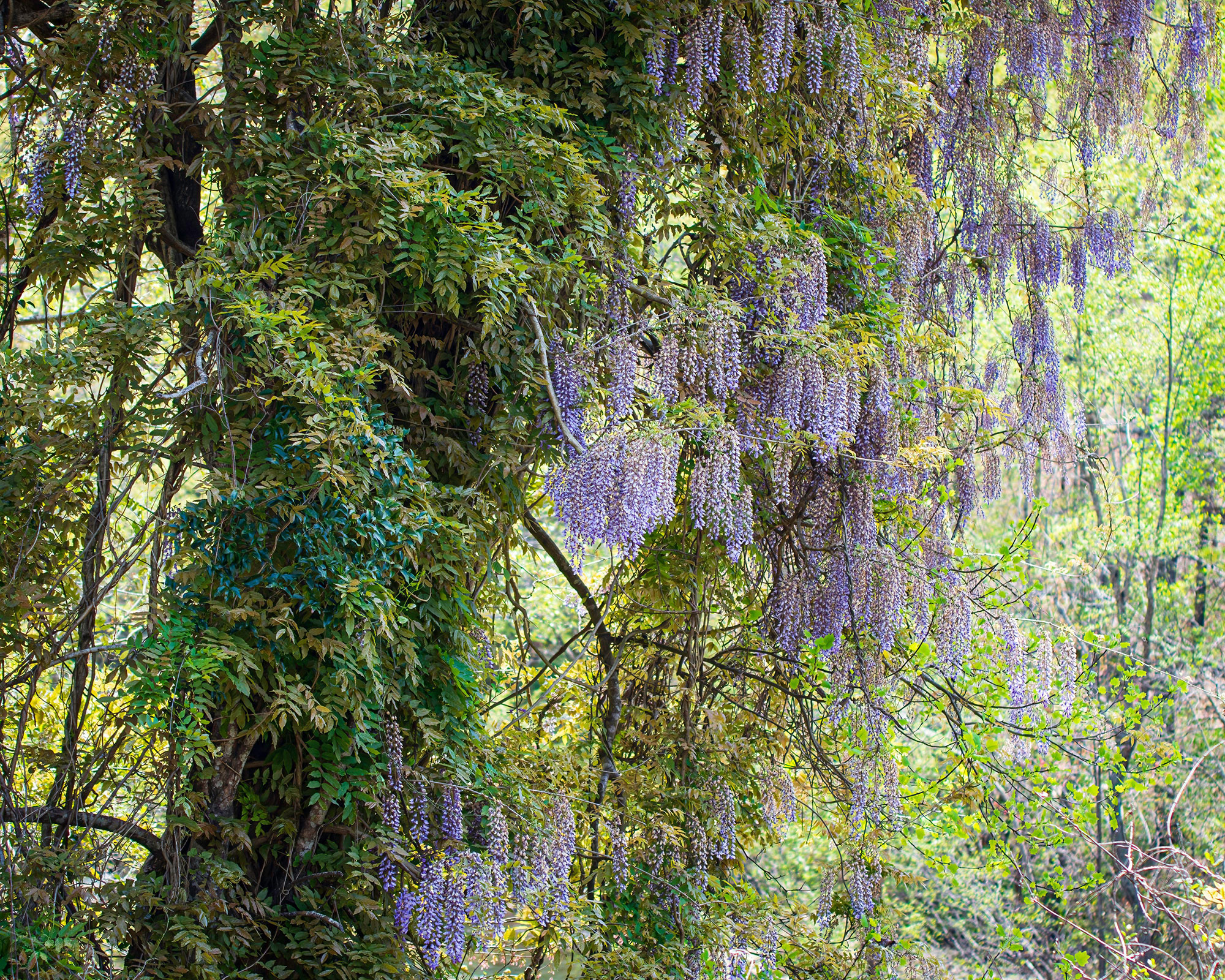
- Hardiness: USDA 5-9
- Chinese wisteria spreads by: Seeds, rooting stems
- Control Chinese wisteria by: Sawing through the stems at ground level and immediately treating with weed killer
- Native alternative: American wisteria (Wisteria frutescens)
An extremely vigorous, twining, deciduous vine found in the east and south of the US, rapidly climbing both deciduous and evergreen trees and reaching up to 60ft with large leaves split into pairs of opposite leaflets.
Mauve pea-flowers are carried in flamboyant dangling strings up to 16in long in spring, before the leaves, and are followed by long, flat, hairy seed pods.
As well as smothering native vines, and the foliage of native trees, the mass of growth in the tops of mature trees makes them vulnerable to storm damage. Tight twining stems may also girdle the trees’ branches.
4. Cogon grass (Imperata cylindrica)
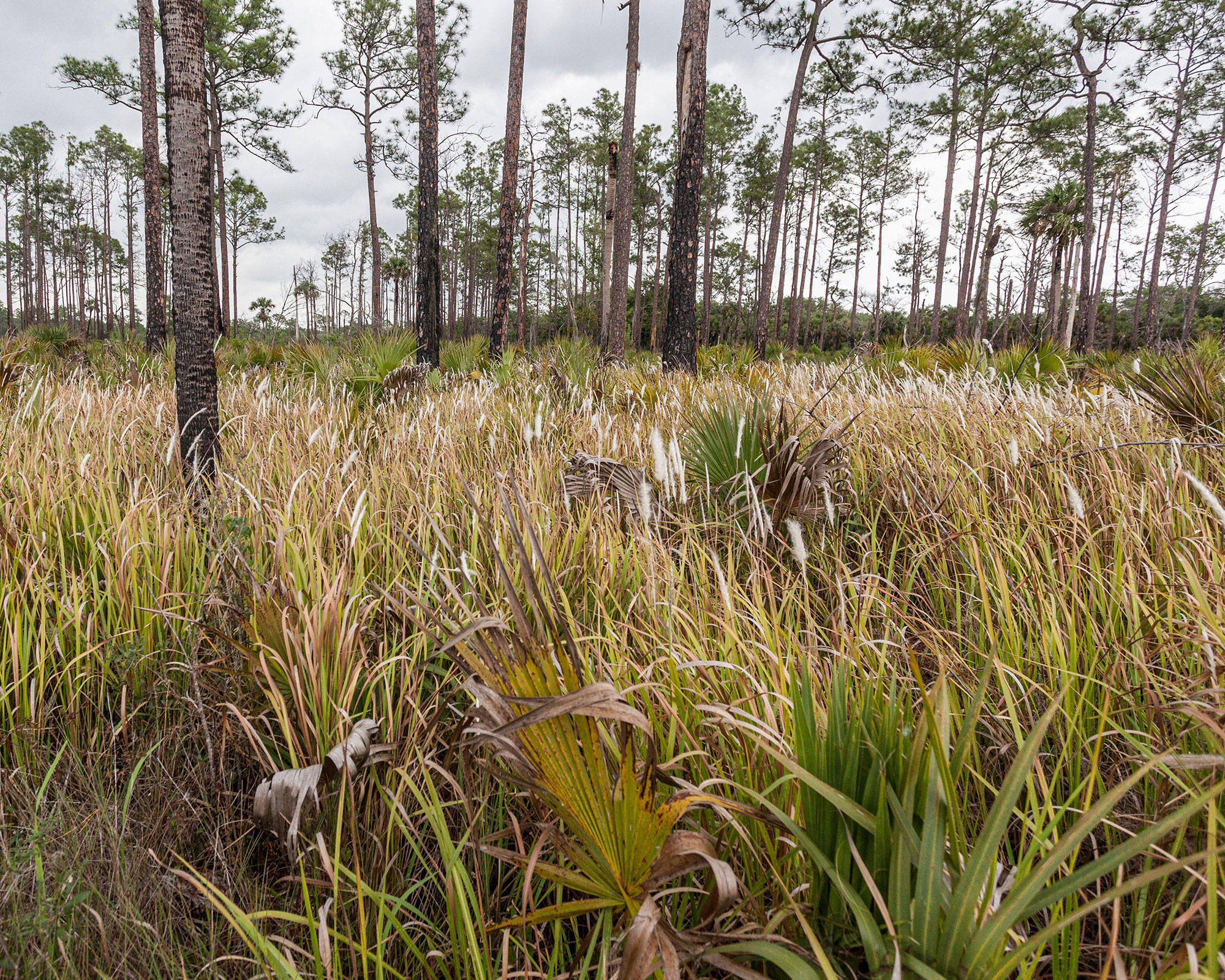
- Hardiness: USDA 5-9
- Cogon grass spreads by: Seeds, creeping roots
- Control cogon grass by: Digging out. Larger areas can be controlled using weed killer, two or more applications may be necessary
- Native alternatives: Fringed sedge (Carex crinita), hop sedge (Carex lupulina)
Established in the east and south from Virginia to Mississippi, and continuing to spread in the south, this aggressive creeping perennial grass is considered one of the worst invasive species in the world.
Reaching 1-6ft in height, the pale foliage becomes biscuit-colored as it ages and the plants produce silver feathery seed heads. Garden varieties are sometimes grown.
Cogon grass is found in dense colonies along highways, on sand dunes, in forests and open fields, and as an agricultural weed. The roots produce a chemical that stunts the growth of other plants allowing it to establish dense carpets that smother native plants.
5. English ivy (Hedera helix)
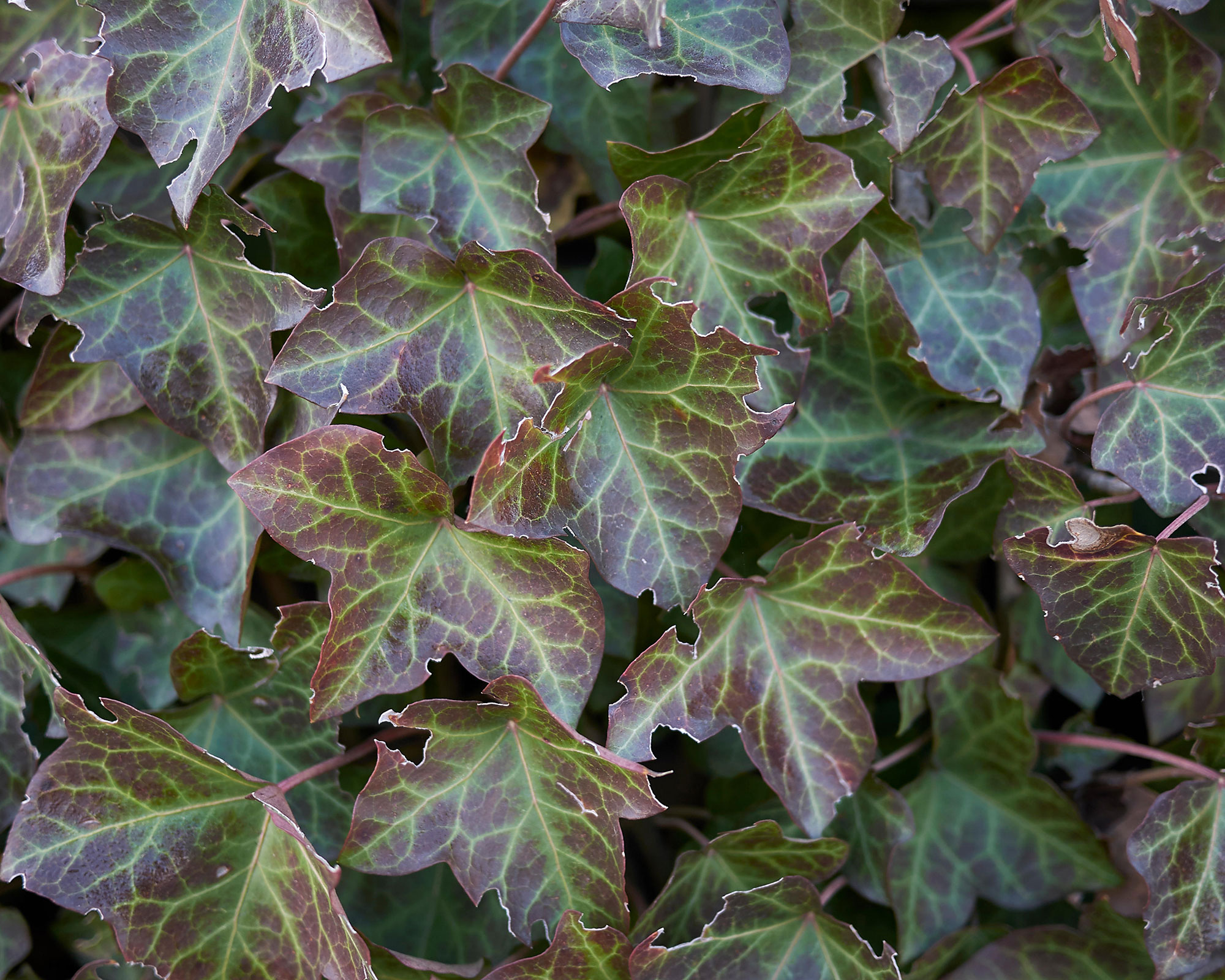
- Hardiness: USDA 4-9
- Ivy spreads by: Seeds, rooting stems
- Control ivy by: Removing 3-4ft of stems at the base of the tree. Then regularly removing any regrowth until no more appears. For ground covering ivy, use a mower set as low as possible
- Native alternative: For ground cover: Allegheny spurge (Pachysandra procumbens). As a vine: Virginia creeper (Parthenocissus quinquefolia)
English ivy is a ground covering plant and tree climbing evergreen vine with small glossy leaves with three to five lobes, then large leaves with creamy flowers and black winter berries as it matures. The stems that climb tree trunks produce very short roots fixing the shoots to the bark but they do not suck sap from the tree.
The ground covering growth smothers many native flowers. As it climbs into the crown of trees, the mass of evergreen growth can weigh down and break branches, especially in gales or when heavy with snow. Ivy is found in the east, south and west and is eaten by deer.
6. Japanese honeysuckle (Lonicera japonica)
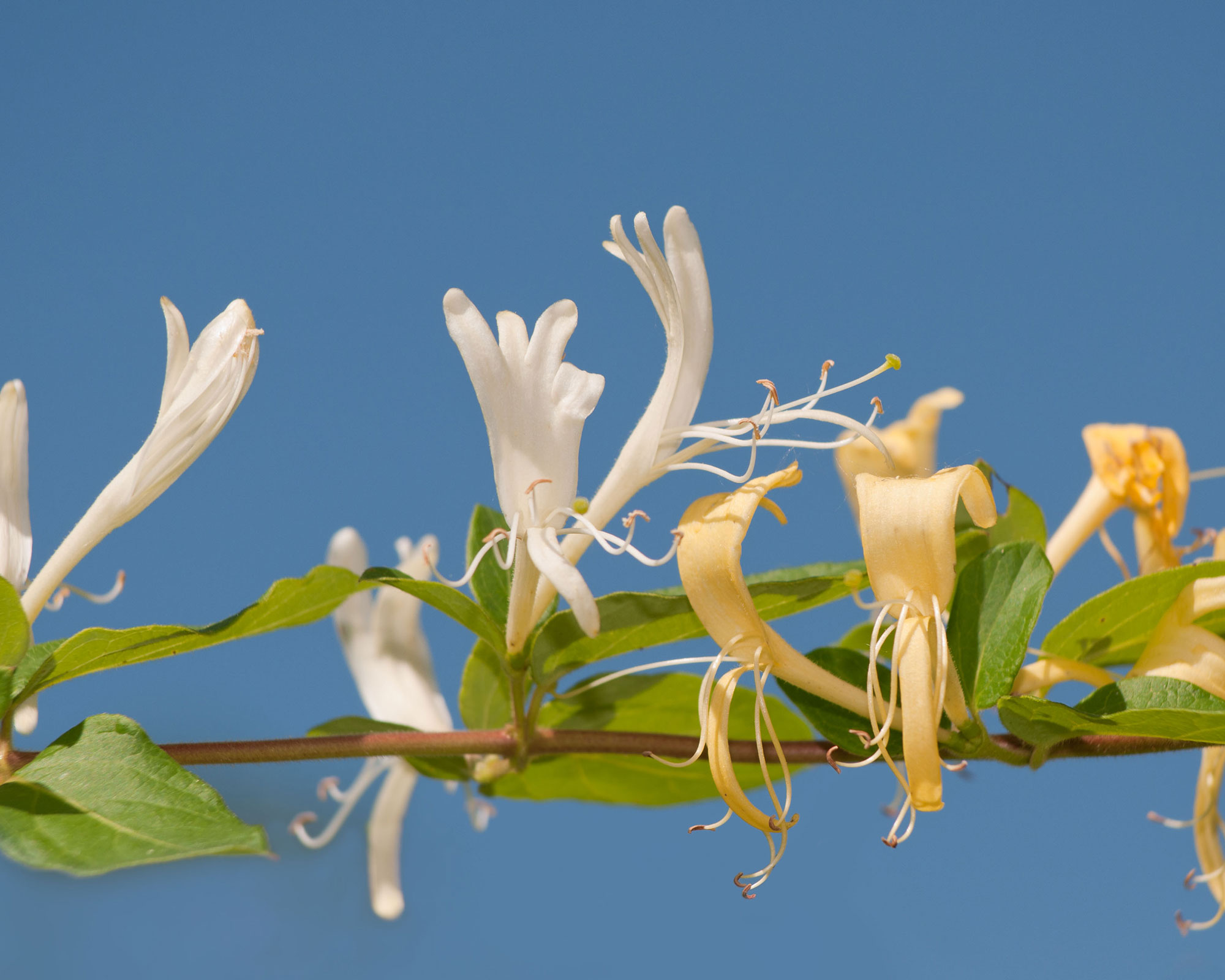
- Hardiness: USDA 4-9
- Japanese honeysuckle spreads by: Seeds, roots producing new shoots and stems rooting in the ground
- Control Japanese honeysuckle by: repeatedly cutting back, mowing, controlled burning or cutting back followed by weed killer treatment
- Native alternative: Coral honeysuckle (Lonicera sempervirens)
Found in eastern states from Maine to Florida and across to Wisconsin and Texas, this rampant twining type of honeysuckle grows in sun or shade in prairies and flood plains, forest margins and clearings. It spreads across the ground, twines into shrubs and trees, collapses highway fences, and smothers everything in its path.
Evergreen in mild zones and deciduous in colder areas, fragrant white summer flowers turn creamy with age and are followed by red berries ripening to black.
7. Eurasian Water Milfoil (Myriophyllum spicatum)
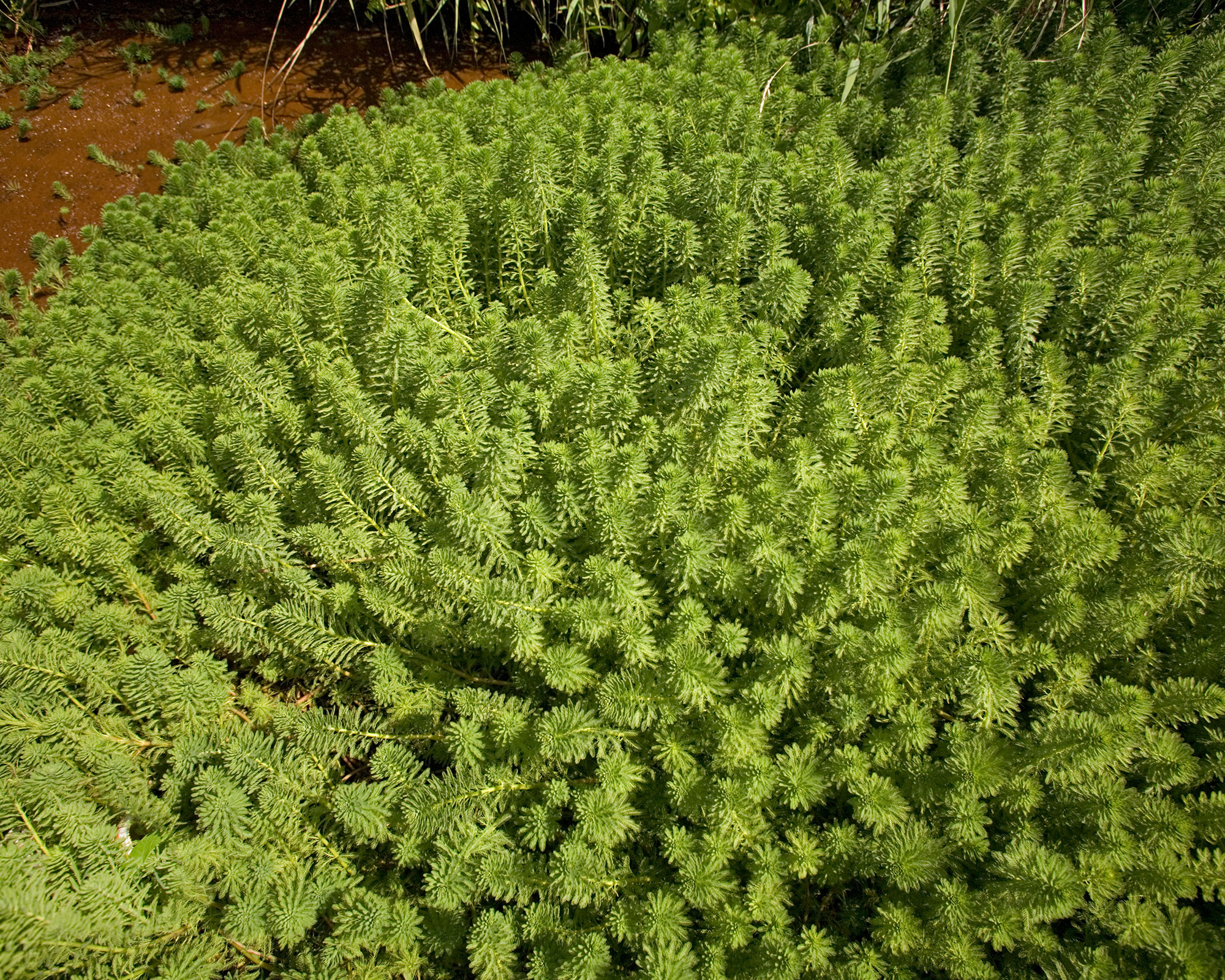
- Hardiness: USDA 6-10
- Eurasian water milfoil spreads by: Stem fragments, seeds
- Control Eurasian water milfoil by: Physical removal using mechanical equipment or hand rakes
- Native alternative: White water lily (Nymphaea odorata), yellow nelumbo (Nelumbo lutea)
This submerged, usually aquatic perennial plant features extended stems up to 8ft long carrying clusters of feathery foliage at intervals and 6in spikes of small red summer flowers held above the surface.
In still and slow moving water, Eurasian water Milfoil spreads into dense mats that not only crowd out native aquatic plants but also impede swimming and boating. The dense growth also blocks light from reaching deeper into the water and can also disrupt habitats for fish, and insects and other aquatic life.
Eurasian water milfoil was originally spread through the aquatics trade but, once established, fragments of stems are carried to new areas.
Looking for aquatic plants for your yard? There are plenty of suggestions in our guide to the best pond plants.
8. Japanese knotweed (Reynoutria japonica)
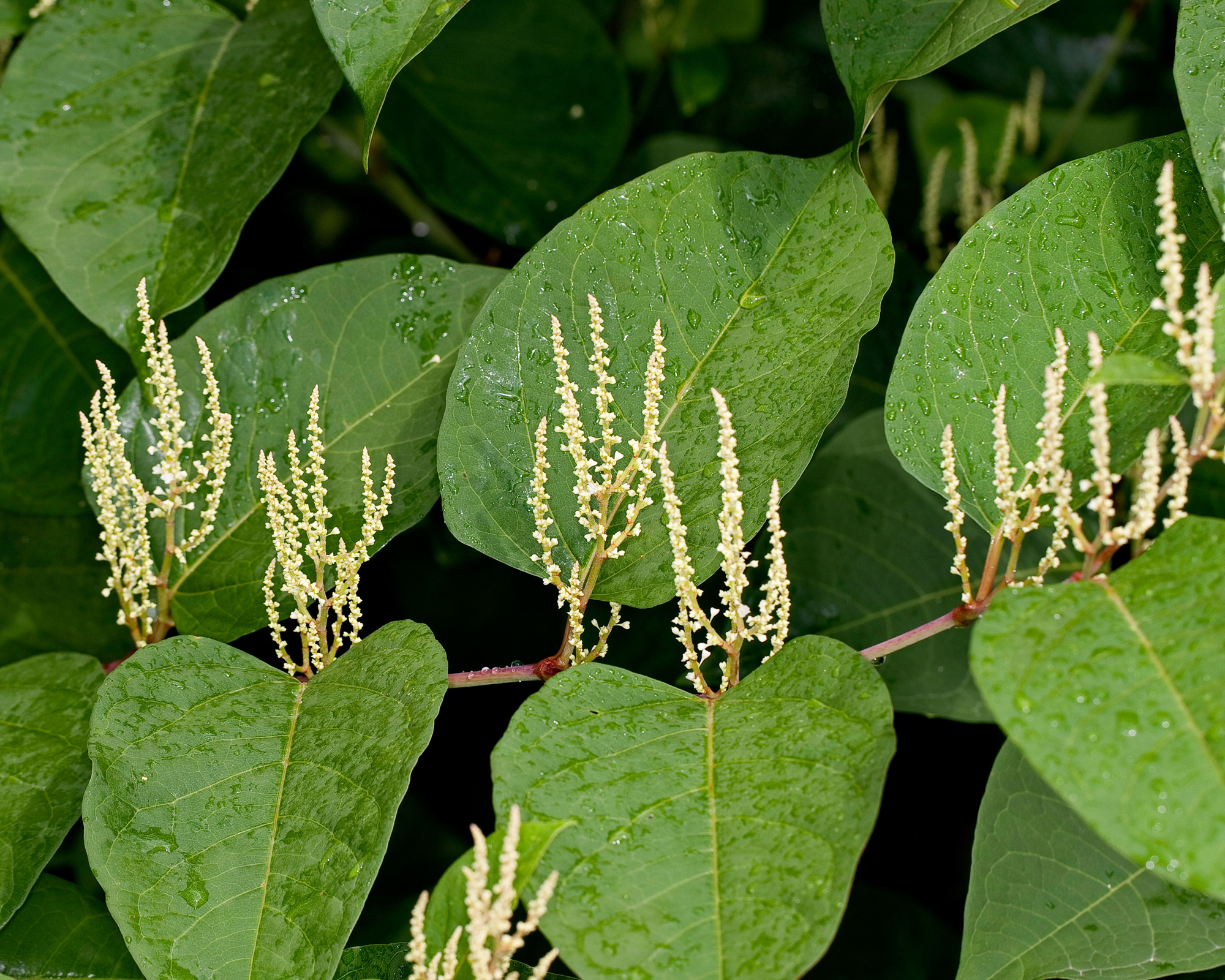
- Hardiness: USDA 4-8
- Japanese knotweed spreads by: Aggressive creeping roots
- Control Japanese knotweed by: Digging out the smallest shoot at the first sign, repeated weed killer treatment. Control is very difficult, it may be necessary to hire a specialist contractor
- Native alternative: Sweet Joe Pye weed (Eupatorium purpureum)
Originally introduced as an ornamental, and now sometimes grown as a medicinal herb, Japanese knotweed is a tall dominant perennial that smothers everything in its path. It develops large stands along rivers and other watercourses, roadsides, and waste ground – often associated with human activity such as road construction.
Roots penetrate cracks in foundations, shoots will force their way through asphalt and also penetrate and clog drains. The stems can grow 4in in a day and are topped in summer with attractive white plumes.
9. Kudzu vine (Pueraria montana)
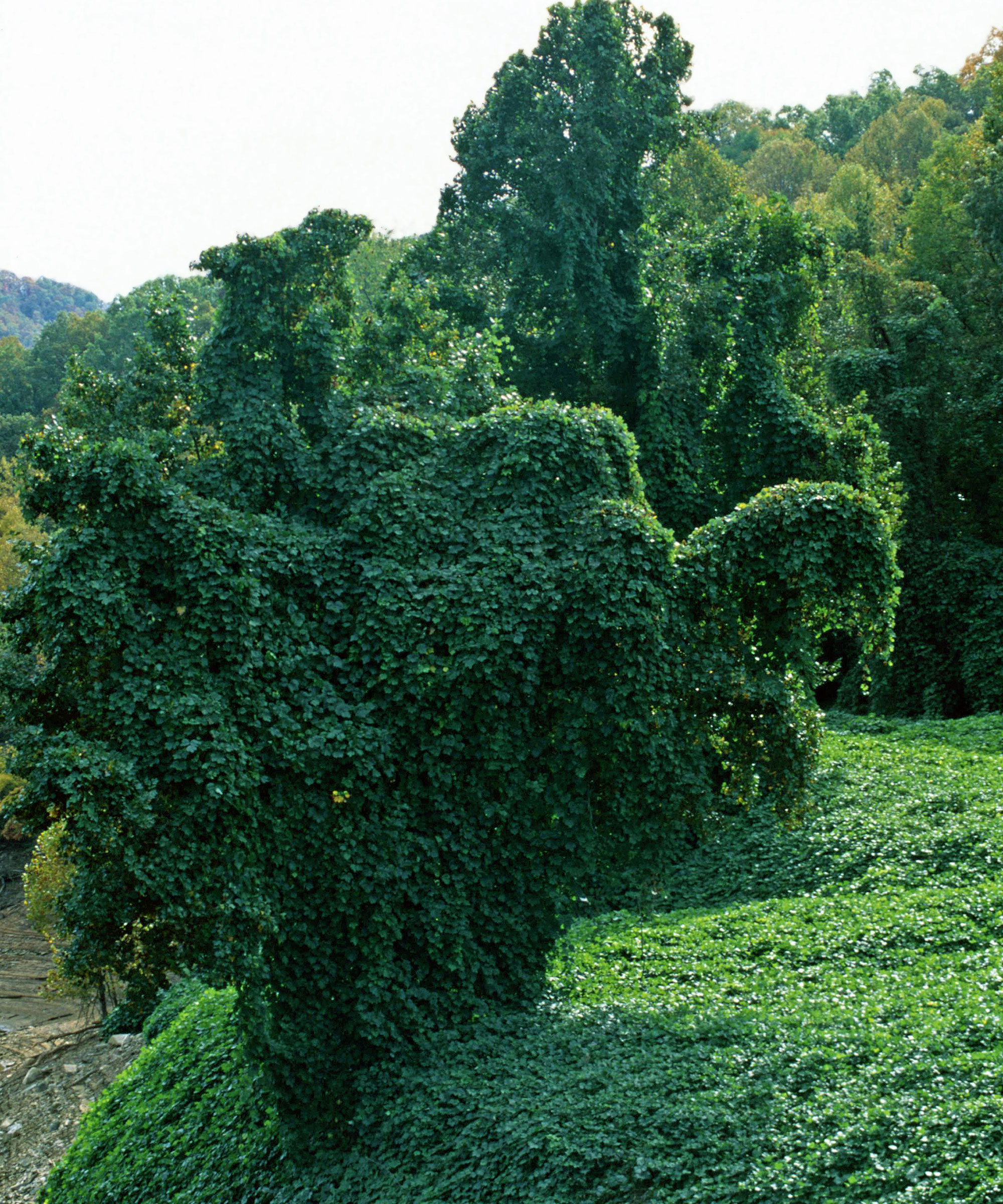
- Hardiness: USDA 4-9
- Kudzu vine spreads by: Seeds, spreading roots, rooting stems
- Control Kudzu vine by: Repeated mowing, grazing, cutting the crown from the roots, or herbicide
- Native alternative: trumpet creeper (Campsis radicans), passionflower (Passiflora incarnata)
Widely known as 'the vine that ate the South', kudzu is less of a threat than many invasive plants but can still be a menace in some areas, especially along highways.
Kudzu is an exceptionally vigorous perennial vine whose alternating leaves are split into three large lobes. Once established it produces tight spikes of purple flowers.
Its rampant growth smothers native plants and its weight as it scrambles through the forest canopy can break branches.
The leaves, flowers and roots are all edible and are also popular with grazing cattle.
10. Multiflora rose (Rosa multiflora)
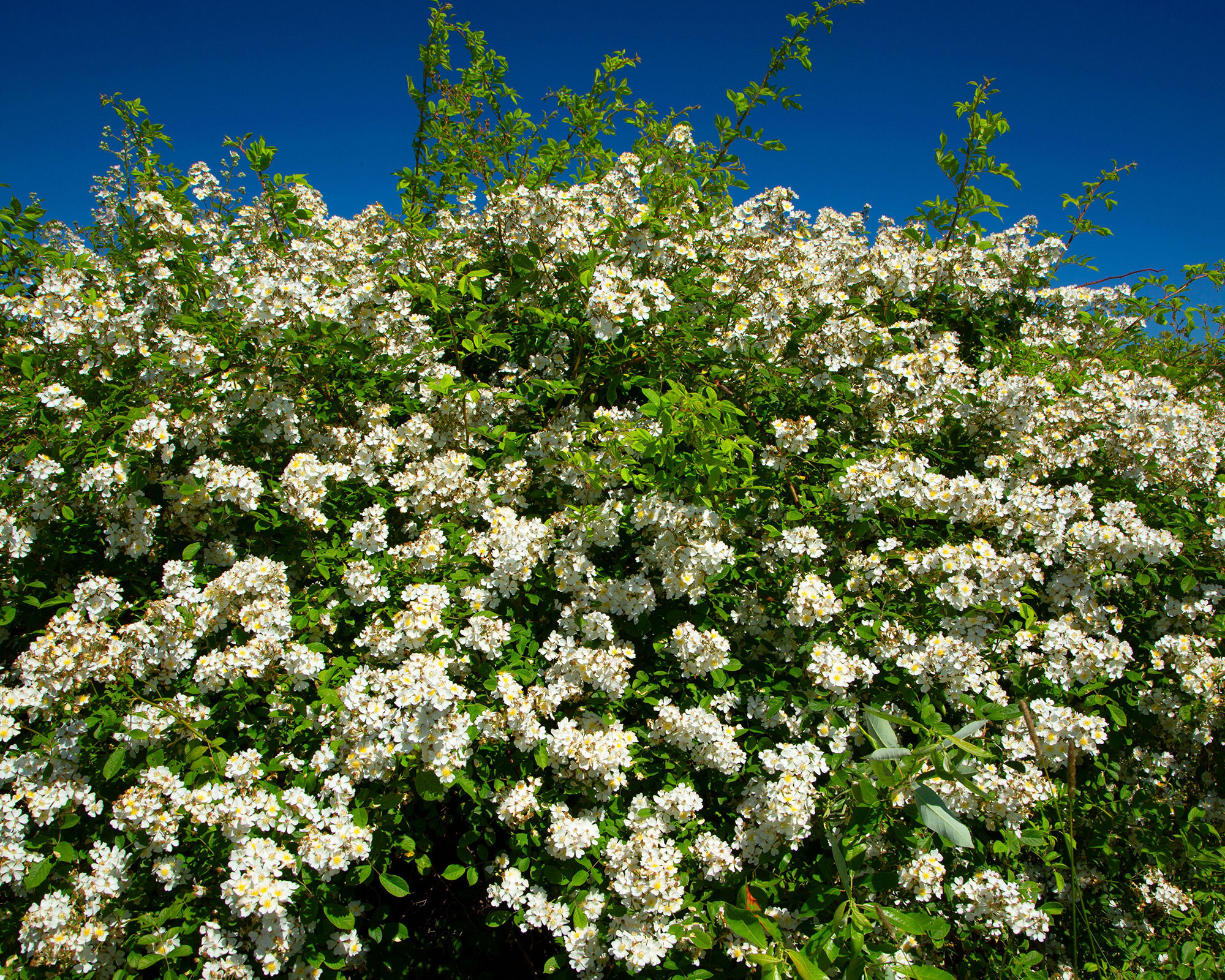
- Hardiness: USDA 5-9
- Multiflora rose spreads by: Seeds, rooting stems, suckers
- Control Multiflora rose by: Mowing followed by herbicide treatment, tearing out plants with a tractor and chain
- Native alternative: Native pasture rose (R. carolina) and the smooth rose (R. blanda)
If you're a fan of having roses in your yard, this is one to avoid. Formerly planted on highway medians to reduce headlight glare and produce impenetrable thickets as a crash barrier, it soon spread to roadsides, pastures and many other open sites.
This deciduous shrub with clusters of pretty white flowers followed by small red fruits was also once planted to encourage wildlife. However, its thorny tangled thickets smother native vegetation and a single plant can produce hundreds of thousands of seeds in a single season.
Find alternative types of roses in our dedicated guide.
11. Common periwinkle (Vinca minor)
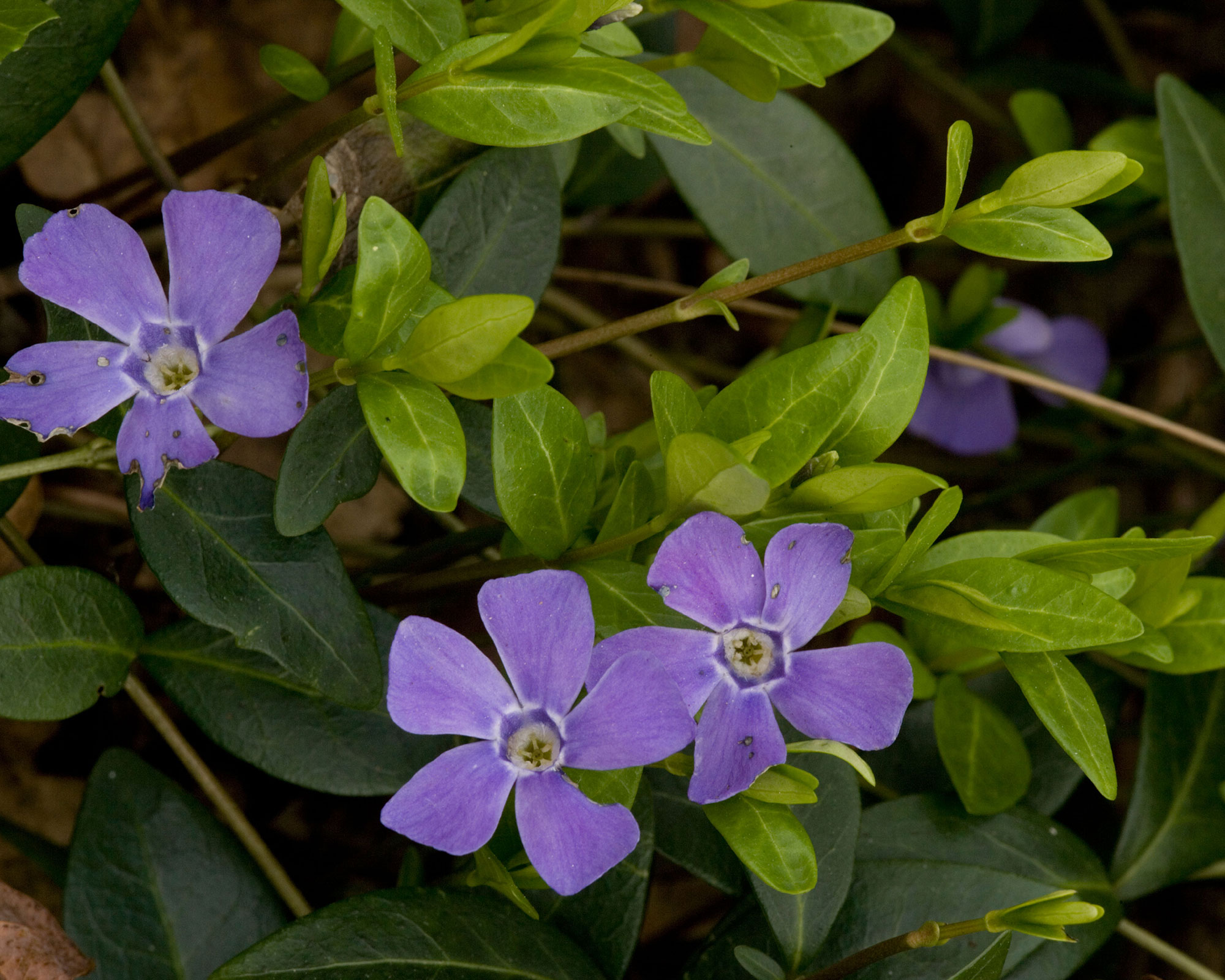
- Hardiness: USDA 4-9
- Periwinkle spreads by: Seed, runners, rooting stems
- Control periwinkle by: Hand pulling, repeated mowing, mowing followed by herbicide treatment
- Native alternative: Allegheny spurge (Pachysandra procumbens)
This adaptable evergreen, low maintenance ground cover plant has escaped from gardens, especially abandoned homesteads, and spread into many damp and shaded habitats mainly across the east and south where it smothers the forest flowers.
Its opposite pairs of dark green leaves create an overlapping smothering carpet of growth which may sprawl into the lower branches of native shrubs. In spring, the pretty five-petalled flowers open like blue or white propellers.
The similar but larger bigleaf periwinkle (Vinca major), is also a vigorous invasive but is restricted to warmer zones, 7-9.
The roots of periwinkles are relatively shallow so easier to remove than those of many invasive plants.
12. Purple loosestrife (Lythrum salicaria)
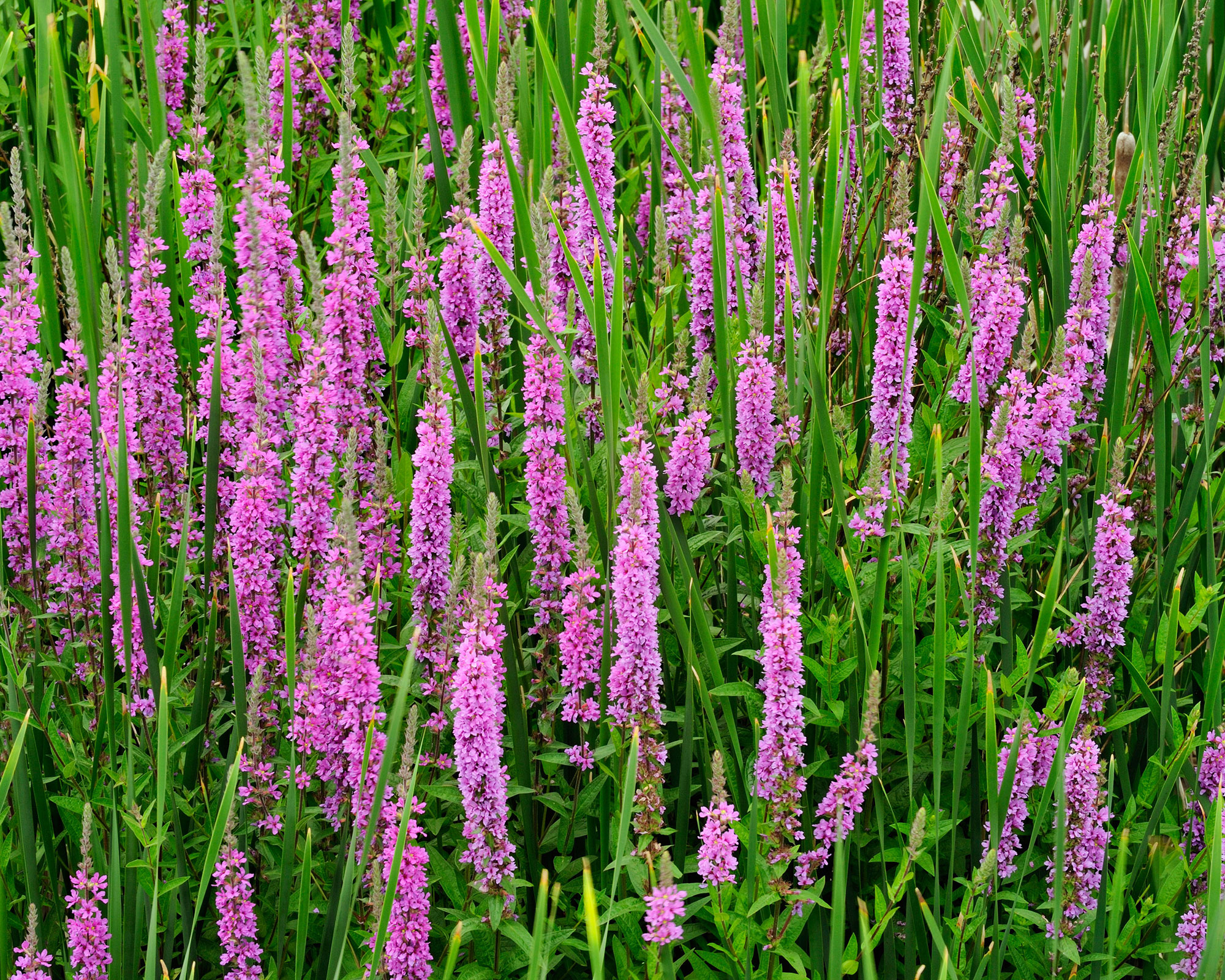
- Hardiness: USDA 4-9
- Purple loosestrife spreads by: Seeds, creeping roots
- Control purple loosestrife by: Hand pulling, containment is often a more sensible aim than elimination
- Native alternative: swamp milkweed (Asclepias incarnata), queen of the prairie (Filipendula rubra)
Introduced from Europe as a flower for garden borders, and on a larger scale for honey production, this hardy perennial can spread quickly into wet places, such as streams and lakesides, ditches and especially marshes.
Its colorful stands of purplish pink flowers in vertical spikes can dominate large areas, although there is some evidence that its presence can improve insect populations. Named varieties with flowers in white, pale pink or red shades are sometimes still offered by nurseries but should be avoided.
Growing in wet habitats across almost the whole country, effective control can be difficult.
Can I use weed killers on invasive plants in my yard?
Always think carefully about using weed killers in your yard. Many will kill any plants they touch, so you may kill your flowers and bushes by mistake. Spray can drift on to your kitchen garden or into your neighbor’s yard and some weed killers can severely damage aquatic habitats such as backyard ponds.
Some gardeners will decide not to use any weed killers but, for some invasives, weed killers can be the only option.
You can often increase the effectiveness of weed killers, and reduce the danger of killing your garden plants, by cutting back your invasives to the ground and spraying weed killer on the vigorous new growth that develops.
This method can also be effective if you want to know how to kill bindweed and how to get rid of poison ivy.
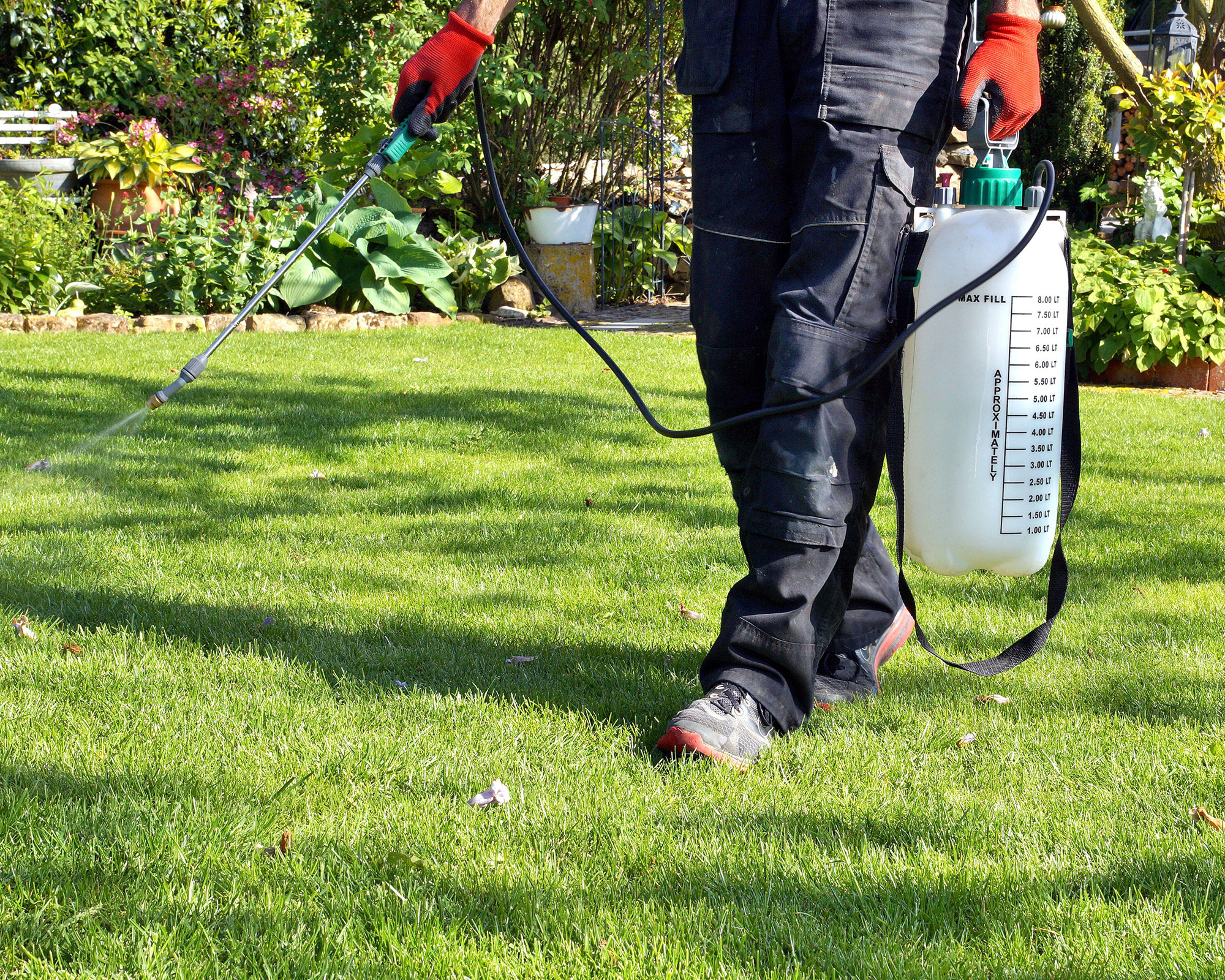
Different lists of invasive plants seem to include different varieties. Who can I trust?
Different invasive plants thrive and cause trouble in different parts of the country. So kudzu vine is a big problem from Virginia and the Carolinas, through Florida, Alabama, and Louisiana but rarely seen at all from Montana and Idaho, across the Dakotas to Wisconsin and Michigan.
So it pays to look for local advice on what to avoid planting in your area and how to deal with invasive plant problems that you may face.
I’d like to plant a tree of Heaven in my yard, but my neighbor says it’s banned. Is that right?
Tree of Heaven is an attractive, fast growing, deciduous tree that smothers and crowds out native trees, shrubs and flowers. It is listed as a noxious weed in 46 states so it is simplest to say that it should not be planted anywhere.
Its spread is helped by its tolerance of poor soils, its vigorous root system that can penetrate foundations and damage paving, plus the ability of the seeds to sprout and develop quickly in harsh urban environments as well as ditches, disturbed and abandoned industrial sites, and along highways.
The winged seed is carried on the wind and seedlings have been found 300ft from the nearest seed-bearing tree.

Graham Rice is a garden writer who has won awards for his work online, and in books and magazines, on both sides of the Atlantic. He is a member of a number of Royal Horticultural Society committees and the recipient of the 2021 Garden Media Guild Lifetime Achievement Award.
